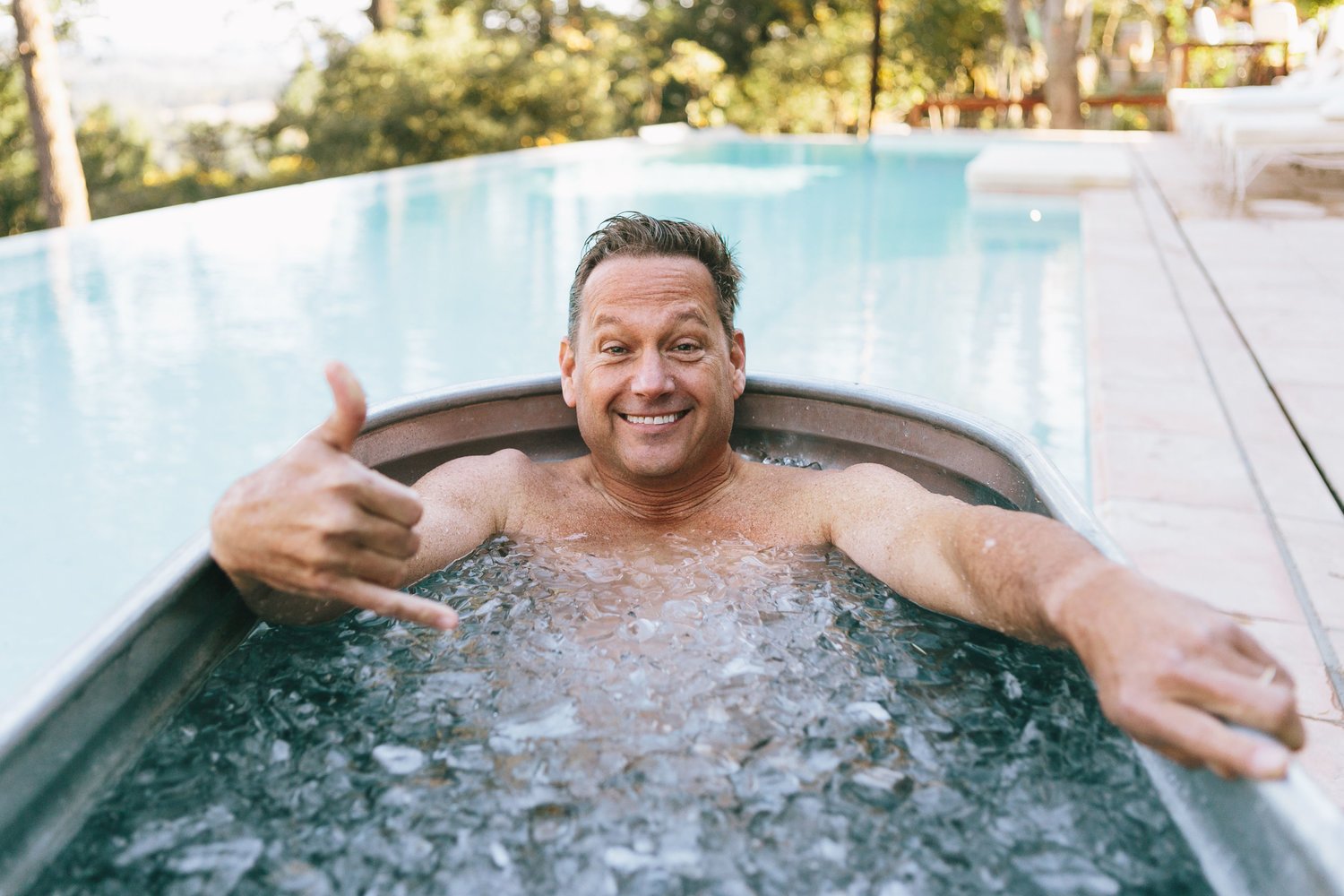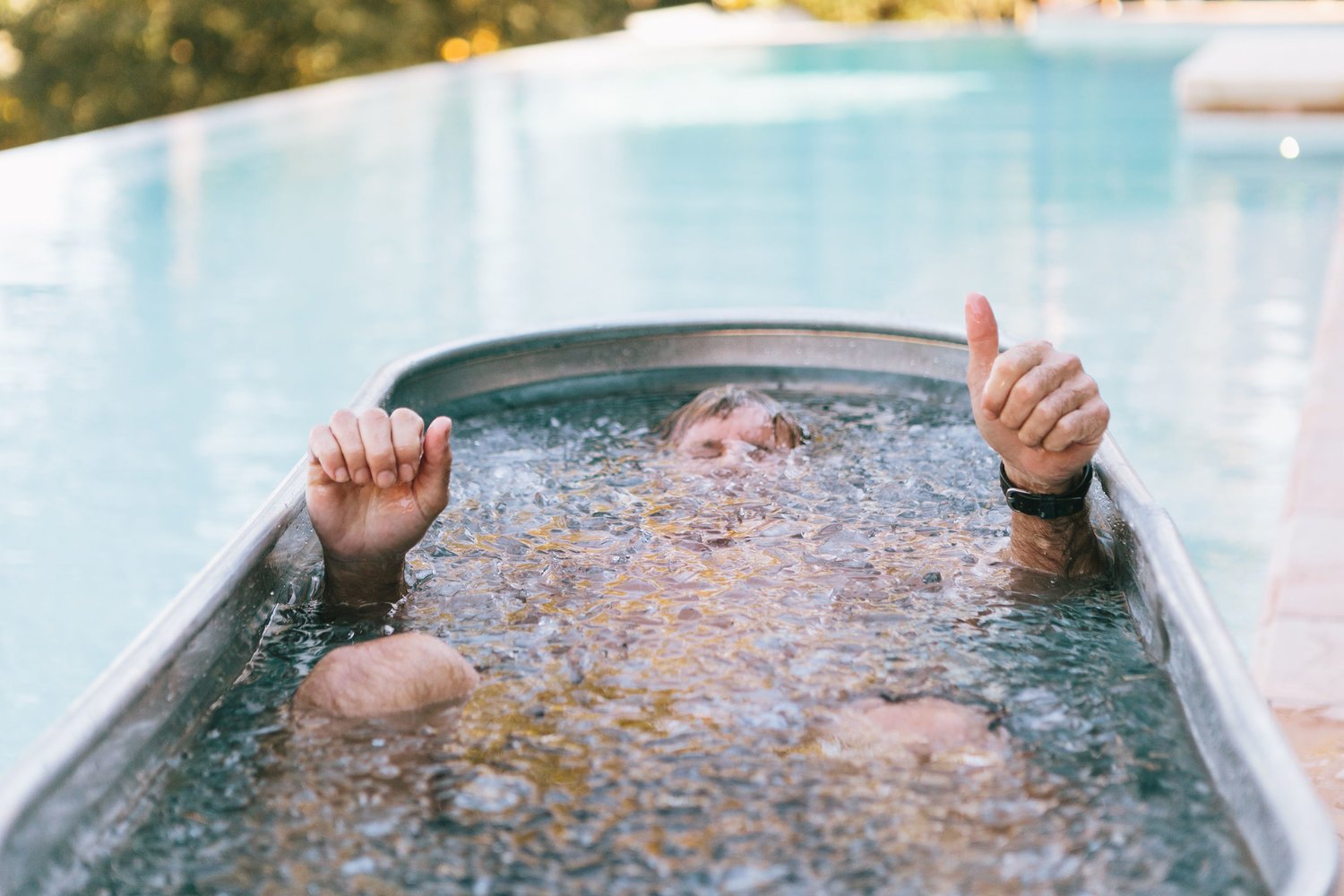Your First Ice Bath—Here's What You Need To Know
By now the benefits of cold immersion are well known, yet many struggle to incorporate this powerful practice into their regular routine.
The benefits of this age-old practice are plenty, not limited to strengthening the immune system, increasing metabolism, improving fat loss, and significant effects on mood. Before you dive headfirst into the cold, here are a few things you should know to be able to have an enjoyable (and repeatable) experience.
As people begin to navigate evolutionary shortcuts in our physiology, they no doubt will stumble onto the power of exposing our bodies to extreme cold.
Before the plunge…
Getting comfortable in cold showers is a prerequisite to a sustainable relationship with cold immersion. Regular cold showers will help you understand the basic physiological responses that you will experience in an ice bath or cold plunge, and you’ll get better at managing them. This will help you have more pleasant ice baths and be able to stay in longer.
What’s the right temperature?
For most of us, the benefits of cold immersion begin at any temperature that makes us uncomfortable, and yet still empowers us to make the practice part of our regular routine. This also means you don’t want your tub so cold that you will struggle with consistency. Ice baths and cold plunges are typically between 38°F to 45°F, but we recommend somewhere between 45°F and 52°F. You can always stay in longer!
How do I set it up?
Before investing in a tank, such as a cattle trough or Plunge (save $150 with code RUNGA), start with your home bathtub or find a spa with a cold plunge. When filling your tub, we recommend using enough water so that you can submerge your entire body up to your ears. Exposing the neck and thyroid gland to the cold is hugely important in order to regulate your body temperature and will help your body adjust to the cold faster. If using a 100 gallon tub, we recommend starting with 60 lbs of ice and approximately 70 gallons of water. With slight variation depending on location, air and tap water temperature, this will bring the water to about 50 degrees and allow for a tolerable yet challenging jump-start into the realm of cold immersion.
How do I prepare?
Prior to cold immersion, you want to activate the parasympathetic, “rest-and-digest” branch of the nervous system, as well as maximize your body’s natural nitric oxide production, a gas that relaxes blood vessels and allows for more efficient oxygen delivery. You can do this easily by utilizing a few specialized nasal breathing techniques, all of which can be utilized in the same session.
BREATHING TECHNIQUE 1
The first technique is to slow your breathing down to 6 breaths per minute. This is one of the fastest ways to downregulate the nervous system and calm your mind. Set a timer for 3-5 minutes. Then, inhale deeply for 5 seconds and exhale fully for 5 seconds, continuously.
BREATHING TECHNIQUE 2
Follow the instructions for Breathing Technique 1, and then begin to ‘hum’ along with each 5-second exhalation. This improves the oxygenation of your cells through significantly increasing nitric oxide production.
BREATHING TECHNIQUE 3
Last, hold the final inhalation of your breathwork for a prolonged, yet submaximal duration. Then, exhale fully as you slowly and steadily step into the cold plunge or ice bath. Take your next breath once you are fully inside the cold in a calm, regulated manner to help the nervous system ease into the experience.
The most important thing here is to listen to your body—this means getting out as soon as or shortly after you start shivering.
How long do I stay in?
The target time of a cold plunge is three minutes. This is why you should build up to a 5-minute cold shower in the weeks preceding your plunge. Three minutes is also long enough to tap into the most desirable benefits of cold immersion, such as improved blood sugar regulation and fat burning. That being said, if you are at 50 degrees or just under, the body can withstand far longer than 3-minutes. In fact, the goal after 4-6 weeks would be 10+ minutes at this temperature, which should then be reduced by 2-3 minutes with every 20 lbs of ice added to 70 gallons of water. The most important thing here is to listen to your body—this means getting out as soon as or shortly after you start shivering.
How do I get the most out of my experience?
Submerging your whole body, including you head, as you get into the ice bath will help you get the most out of your experience. The total body dip exposes the whole body, thyroid, and back of the neck, which helps elicit the maximal hormonal response. After the initial dip, you can also dip your face in periodically throughout the plunge, which continues to send a dramatic message into the nervous system, ensuring that you get the benefits that you are after. Remember to breathe through your nose throughout and remind yourself that it all gets easier after the first minute.
Should I warm up after cold immersion?
At events, people often want to know whether to warm up after cold immersion. The truth is, not warming up and allowing the body to naturally come back to its regular temperature is a very metabolically active process. This will aid with fat-burning and lead to improvements in metabolic health. We believe this should be the default strategy for daily cold showers and most of your ice baths or cold plunges. However, occasionally following an ice bath with a sauna can be an extremely healthful activity, and can allow you to hit the cold again intermittently. We personally choose SaunaSpace, which combines heat with red light and takes just seconds to heat up (use code RUNGA for a special offer).
Remember to breathe through your nose throughout, and remind yourself that it all gets easier after the first minute.
Cold immersion is truly an enjoyable practice—one that you can build a very pleasant relationship with. At our events, it’s an opportunity for laughs and celebration. It isn’t meant to be torture and it’s important to respect and appreciate it for all of the benefits it can bring you, including the immediate benefit of feeling more awake and present. We’ve never met a person who hasn’t learned to love it!





